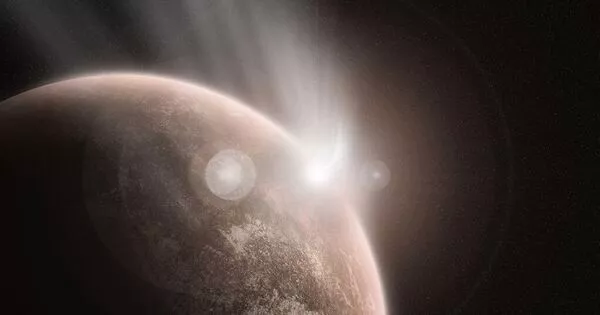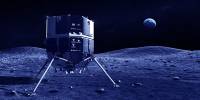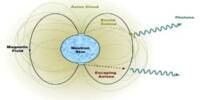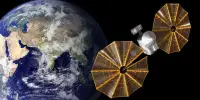Venus, which rises higher each evening in the western twilight, is the slowest-spinning body in the known universe. You’d only need to walk four miles per hour along a bike path that circles Venus’s equator to keep night from falling on the planet.
On Earth, it takes 24 hours to complete one spine; on Venus, it takes 5,832 hours. Why are you so slow? The friction caused by Venus’s thick atmosphere and hurricane-force winds is one reason. The surface pressure on Venus is 90 times that of Earth at sea level due to a toxic blanket of carbon dioxide.
Venus’s sister planet would most likely not rotate if not for its soupy, fast-moving atmosphere. Instead, Venus would be frozen in time, always facing the sun in the same way that the moon always faces Earth.
Tidal locking occurs when the gravity of a large object in space prevents a smaller object from spinning. Because it prevents this locking, a UC Riverside scientist believes the atmosphere should be a more prominent factor in Venus and other planet studies. These arguments, along with descriptions of Venus as a partially tidally locked planet, were published today in the journal Nature Astronomy.
We think of the atmosphere as a thin, almost separate layer on top of a planet that has little interaction with the solid planet. The powerful atmosphere of Venus teaches us that it is a much more integrated part of the planet that affects everything, including how fast the planet rotates.
Stephen Kane
“We think of the atmosphere as a thin, almost separate layer on top of a planet that has little interaction with the solid planet,” said Stephen Kane, lead paper author and UCR astrophysicist. “The powerful atmosphere of Venus teaches us that it is a much more integrated part of the planet that affects everything, including how fast the planet rotates.”
Venus rotates once every 243 Earth days, but its atmosphere circulates the planet every four days. Extremely strong winds cause the planet’s atmosphere to drag along its surface as it circulates, slowing its rotation and loosening the grip of the sun’s gravity. Slow rotation in turn has dramatic consequences for the sweltering Venusian climate, with average temperatures of up to 900 degrees Fahrenheit — hot enough to melt lead.
“It’s incredibly alien,” Kane said, “a wildly different experience than being on Earth. Standing on Venus’s surface would be like standing at the bottom of a boiling hot ocean. It was impossible to breathe on it.”
One reason for the heat is that nearly all of the sun’s energy absorbed by Venus is absorbed by its atmosphere and never reaches the planet’s surface. This means that a rover equipped with solar panels, such as the one NASA sent to Mars, would be inoperable.

The Venusian atmosphere also prevents sunlight from leaving the planet, preventing cooling or liquid water from forming on its surface, a condition known as a runaway greenhouse effect. It is unknown whether being partially tidally locked contributes to this runaway greenhouse state, which eventually renders a planet uninhabitable to life as we know it. It is critical to gain clarity on this question not only to understand Venus, but also to study the exoplanets that are likely to be targeted for future NASA missions.
According to new data from a European space probe, Venus is spinning even slower than astronomers thought. Based on the speed of surface features passing beneath the orbiting spacecraft, scientists with NASA’s Magellan mission calculated in the early 1990s that a single rotation of Venus takes 243.015 Earth days. However, scientists mapping the surface of Venus with the European Space Agency’s Venus Express orbiter were surprised to find the same features up to 12.4 miles (20 kilometers) away from where they were expected to be based on previous measurements.
The majority of the planets that are likely to be observed by the recently launched James Webb Space Telescope are extremely close to their stars, even closer than Venus is to the sun. Therefore, they’re also likely to be tidally locked.
Since humans may never be able to visit exoplanets in person, making sure computer models account for the effects of tidal locking is critical. “Venus is our opportunity to get these models correct, so we can properly understand the surface environments of planets around other stars,” Kane said.
“We’re not doing a good job of taking this into account right now. To interpret the properties of exoplanets, we mostly use Earth-like models. ‘Look over here!’ says Venus, waving both arms around.”
Clarifying the factors that contributed to a runaway greenhouse state on Venus, Earth’s closest planetary neighbor, can also help improve models of what might happen to Earth’s climate in the future. “Ultimately, my motivation for studying Venus is to better understand Earth,” Kane explained.
















